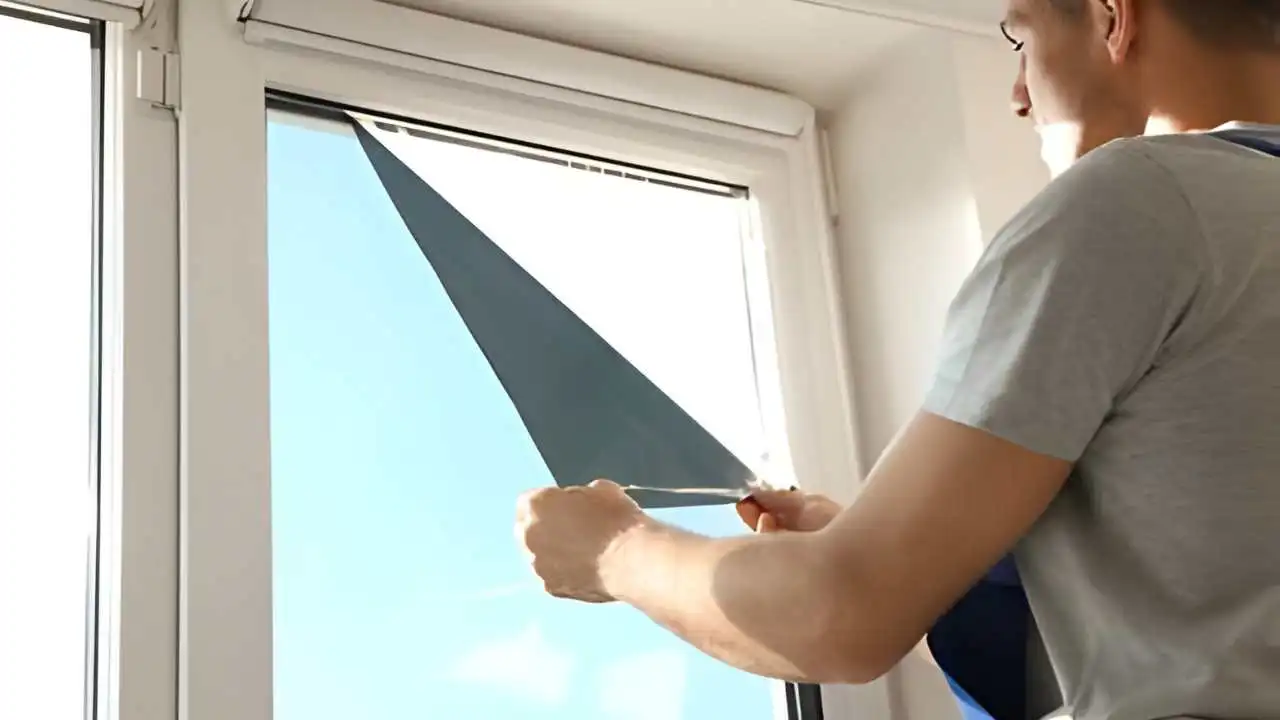
Did you know that harmful UV rays can fade your furniture as effectively as a day at the beach? Non-reflective window tint acts like a sunscreen for your home, protecting your belongings and keeping your interior looking fresh for years to come.
Types of Window Tint
Reflective Tint
The reflective tint is the most traditional type of window tint, with its easily recognizable mirrored finish. It works by reflecting a large percentage of sunlight away from the window, providing excellent heat reduction and maximized privacy from the outside. However, there are a few drawbacks: reduced visibility from inside at night, potential for visual distortions, and some regions have restrictions on how reflective car window tint can be.
Non-Reflective Tint
This type of tint has a subtler appearance; instead of reflecting light, it absorbs it. Non-reflective tint provides several key advantages: it allows for clear views through the tinted windows without glare or distortions and offers a wider variety of colours and darkness levels to better suit your aesthetic preferences.
Protect Your Home and Belongings
UV Protection: Non-reflective tint works like a powerful sunscreen for your home. It effectively blocks nearly all harmful UV rays, a major cause of fading for fabrics, carpets, artwork, and furniture. Protect your precious belongings from discolouration and premature ageing.
Heat Reduction: While not as pronounced as reflective tint, non-reflective films still significantly lower the heat transmitted through windows. Non Reflective tint helps your home stay cooler, making your air-conditioning system work less, leading to energy savings. You’ll enjoy enhanced comfort without those hot spots near sunny windows.
Enhance Safety and Security
Glare Reduction: Non-reflective tints minimize the harsh, blinding glare that can make it difficult to see both while driving and inside your home. This glare reduction can help mitigate accidents, especially during sunrise and sunset when the sun is low on the horizon.
Exterior Protection: Not only does glare bouncing off your windows make it hard to see inside, but it can also affect the outside. Harsh sunlight from windows can damage landscaping, fade outdoor furniture, and cause siding materials to warp or discolour over time. Non-reflective tint greatly reduces those reflections, protecting your yard and home exterior.
Improve Visual Clarity and Aesthetics
Maintain Natural Views: Unlike reflective tints, which can cause distracting distortions, non-reflective tint allows you to enjoy crisp, clear views. It also preserves the natural look of your windows, creating a less obtrusive appearance that seamlessly blends with your home or vehicle’s aesthetic.
Increased Visibility for Drivers: Clear visibility is critical for safe driving, especially at night. Non-reflective tint minimizes internal reflections from dashboards and interior lights, significantly improving your ability to see outside your vehicle, even in low-light conditions.
Types of Non-Reflective Tint
While all non-reflective tints share the benefit of reduced reflections, they do come in different varieties with distinct features:
Dyed Tint: This is the most affordable and common type. It primarily adds darkness, providing UV protection and heat reduction, but its performance degrades over time.
Metalized Tint: Featuring tiny metal particles within the film, metalized tints offer better heat rejection than dyed films. However, they can potentially interfere with cell phone and radio signals.
Ceramic Tint: The most advanced and expensive option, ceramic tints use nano-ceramic technology for unparalleled heat rejection, UV blockage, and durability. They are signal-friendly and don’t fade over time.
Hybrid Tint: These combine elements of dyed and metalized tints, offering a balance of performance and cost.
Choosing the Right Tint
Consider these factors when selecting your non-reflective tint:
Purpose: Prioritize UV protection if you’re focused on interior preservation. Opt for ceramic or hybrid for maximum heat reduction if comfort is your primary goal.
Budget: Dyed films are the most economical, while ceramic options are premium.
Appearance: Non-reflective tints come in shades and even neutral tones for those wanting the least visible change.
Regulations: Always verify local window tinting laws for allowable darkness percentages.
Important Considerations
Local Tint Laws: Research and adhere to tint darkness and reflectivity regulations to avoid legal issues.
Professional Installation: Opt for professional installation to ensure optimal performance, aesthetics, and adherence to vehicle warranties.
Tint Quality: Choose reputable brands and installers that offer high-quality tints for lasting durability and performance.
Tint Shade: Select a shade that balances desired benefits (e.g., heat rejection, privacy) with legal regulations and your visibility needs.
Conclusion
Non-reflective window tint is a versatile and beneficial upgrade for your home, car, and eyesight. It protects your interiors from degradation, improves comfort, enhances visibility, and boosts overall aesthetics. If you’re seeking a window tint that focuses on clarity, safety, and maintaining the natural look of your windows, non-reflective is an outstanding choice.
Frequently Asked Questions
Yes, although it may not be as effective as reflective tint, non-reflective tint still reduces heat, helping to keep your home or car cooler.
Yes! Non-reflective tint is one of the major benefits. Non-reflective tint significantly reduces internal reflections, allowing for clear visibility at night and in low-light conditions.
No, most non-reflective tints, especially ceramic ones, are signal-friendly and will not cause disruptions to your cell phone or GPS reception.
High-quality non-reflective tints, especially ceramic options, can last many years, often backed by manufacturer warranties.
Yes, professional installation guarantees the proper application of the tint, ensuring maximum benefits, longevity, and a flawless aesthetic.
